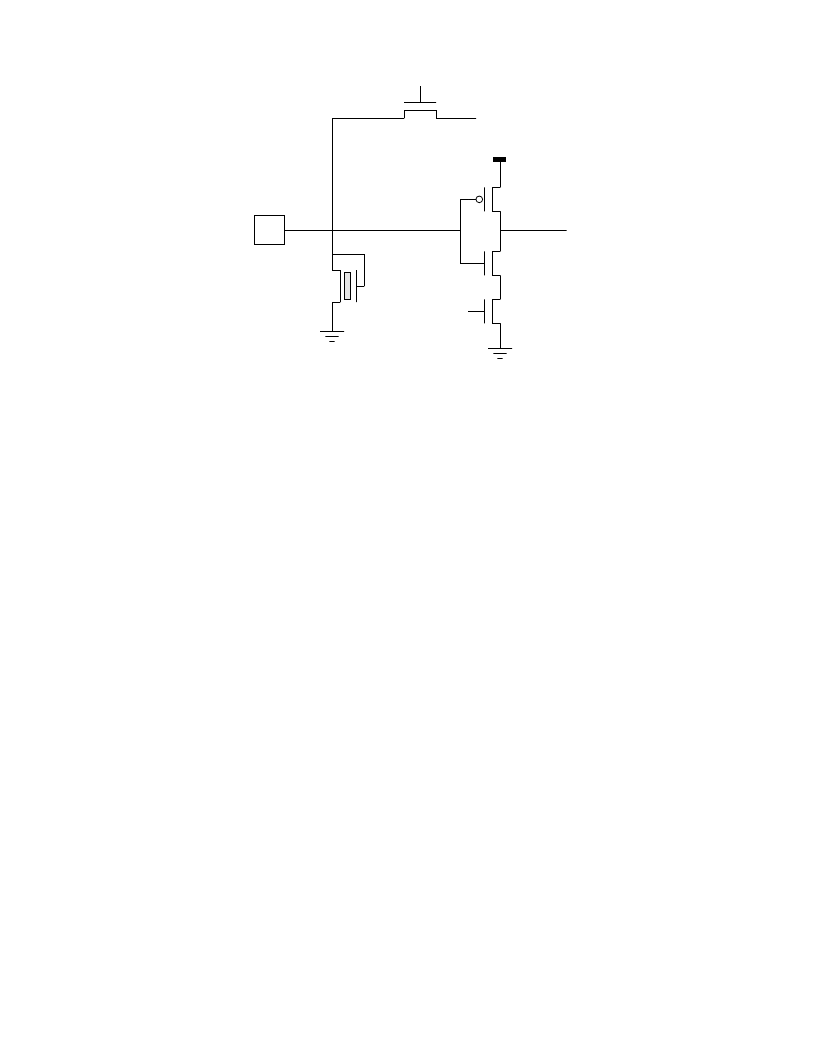- 您現(xiàn)在的位置:買賣IC網(wǎng) > PDF目錄369902 > MC68HC11A8 (Motorola, Inc.) 8-Bit Microcontroller(8位微控制器) PDF資料下載
參數(shù)資料
| 型號: | MC68HC11A8 |
| 廠商: | Motorola, Inc. |
| 元件分類: | 8位微控制器 |
| 英文描述: | 8-Bit Microcontroller(8位微控制器) |
| 中文描述: | 8位微控制器(8位微控制器) |
| 文件頁數(shù): | 49/512頁 |
| 文件大?。?/td> | 4071K |
| 代理商: | MC68HC11A8 |
第1頁第2頁第3頁第4頁第5頁第6頁第7頁第8頁第9頁第10頁第11頁第12頁第13頁第14頁第15頁第16頁第17頁第18頁第19頁第20頁第21頁第22頁第23頁第24頁第25頁第26頁第27頁第28頁第29頁第30頁第31頁第32頁第33頁第34頁第35頁第36頁第37頁第38頁第39頁第40頁第41頁第42頁第43頁第44頁第45頁第46頁第47頁第48頁當前第49頁第50頁第51頁第52頁第53頁第54頁第55頁第56頁第57頁第58頁第59頁第60頁第61頁第62頁第63頁第64頁第65頁第66頁第67頁第68頁第69頁第70頁第71頁第72頁第73頁第74頁第75頁第76頁第77頁第78頁第79頁第80頁第81頁第82頁第83頁第84頁第85頁第86頁第87頁第88頁第89頁第90頁第91頁第92頁第93頁第94頁第95頁第96頁第97頁第98頁第99頁第100頁第101頁第102頁第103頁第104頁第105頁第106頁第107頁第108頁第109頁第110頁第111頁第112頁第113頁第114頁第115頁第116頁第117頁第118頁第119頁第120頁第121頁第122頁第123頁第124頁第125頁第126頁第127頁第128頁第129頁第130頁第131頁第132頁第133頁第134頁第135頁第136頁第137頁第138頁第139頁第140頁第141頁第142頁第143頁第144頁第145頁第146頁第147頁第148頁第149頁第150頁第151頁第152頁第153頁第154頁第155頁第156頁第157頁第158頁第159頁第160頁第161頁第162頁第163頁第164頁第165頁第166頁第167頁第168頁第169頁第170頁第171頁第172頁第173頁第174頁第175頁第176頁第177頁第178頁第179頁第180頁第181頁第182頁第183頁第184頁第185頁第186頁第187頁第188頁第189頁第190頁第191頁第192頁第193頁第194頁第195頁第196頁第197頁第198頁第199頁第200頁第201頁第202頁第203頁第204頁第205頁第206頁第207頁第208頁第209頁第210頁第211頁第212頁第213頁第214頁第215頁第216頁第217頁第218頁第219頁第220頁第221頁第222頁第223頁第224頁第225頁第226頁第227頁第228頁第229頁第230頁第231頁第232頁第233頁第234頁第235頁第236頁第237頁第238頁第239頁第240頁第241頁第242頁第243頁第244頁第245頁第246頁第247頁第248頁第249頁第250頁第251頁第252頁第253頁第254頁第255頁第256頁第257頁第258頁第259頁第260頁第261頁第262頁第263頁第264頁第265頁第266頁第267頁第268頁第269頁第270頁第271頁第272頁第273頁第274頁第275頁第276頁第277頁第278頁第279頁第280頁第281頁第282頁第283頁第284頁第285頁第286頁第287頁第288頁第289頁第290頁第291頁第292頁第293頁第294頁第295頁第296頁第297頁第298頁第299頁第300頁第301頁第302頁第303頁第304頁第305頁第306頁第307頁第308頁第309頁第310頁第311頁第312頁第313頁第314頁第315頁第316頁第317頁第318頁第319頁第320頁第321頁第322頁第323頁第324頁第325頁第326頁第327頁第328頁第329頁第330頁第331頁第332頁第333頁第334頁第335頁第336頁第337頁第338頁第339頁第340頁第341頁第342頁第343頁第344頁第345頁第346頁第347頁第348頁第349頁第350頁第351頁第352頁第353頁第354頁第355頁第356頁第357頁第358頁第359頁第360頁第361頁第362頁第363頁第364頁第365頁第366頁第367頁第368頁第369頁第370頁第371頁第372頁第373頁第374頁第375頁第376頁第377頁第378頁第379頁第380頁第381頁第382頁第383頁第384頁第385頁第386頁第387頁第388頁第389頁第390頁第391頁第392頁第393頁第394頁第395頁第396頁第397頁第398頁第399頁第400頁第401頁第402頁第403頁第404頁第405頁第406頁第407頁第408頁第409頁第410頁第411頁第412頁第413頁第414頁第415頁第416頁第417頁第418頁第419頁第420頁第421頁第422頁第423頁第424頁第425頁第426頁第427頁第428頁第429頁第430頁第431頁第432頁第433頁第434頁第435頁第436頁第437頁第438頁第439頁第440頁第441頁第442頁第443頁第444頁第445頁第446頁第447頁第448頁第449頁第450頁第451頁第452頁第453頁第454頁第455頁第456頁第457頁第458頁第459頁第460頁第461頁第462頁第463頁第464頁第465頁第466頁第467頁第468頁第469頁第470頁第471頁第472頁第473頁第474頁第475頁第476頁第477頁第478頁第479頁第480頁第481頁第482頁第483頁第484頁第485頁第486頁第487頁第488頁第489頁第490頁第491頁第492頁第493頁第494頁第495頁第496頁第497頁第498頁第499頁第500頁第501頁第502頁第503頁第504頁第505頁第506頁第507頁第508頁第509頁第510頁第511頁第512頁

M68HC11
REFERENCE MANUAL
PINS AND CONNECTIONS
MOTOROLA
2-27
Figure 2-16 Internal Circuitry — Analog Input-Only Pin
If the pin voltage is driven low enough relative to the gate voltage of the analog multi-
plexer device, this N-channel device can turn on. A conductive path between the neg-
ative pin and the A/D capacitor array may discharge the capacitors and disrupt any A/
D conversion in progress. The thick-field protection device and other circuit and layout
measures around the N-channel multiplexer device are intended to prevent the pin
voltage from becoming negative enough to turn on the multiplexer device. Even with
these internal protective measures, a cautious user should avoid negative levels on
any A/D pin because a large negative transient could still disrupt an A/D conversion.
An A/D conversion can be disrupted in this manner if any A/D pin experiences a seri-
ous negative transient; the transient need not be on the pin associated with the con-
version.
External diode clamps to V
DD
are not necessarily a good idea on the analog inputs.
Leakage through an external diode would be significant in relationship to the pin leak-
age current; thus, this extra leakage could affect the accuracy of analog conversion
results. Analog input pins can usually be protected by a low-pass filter with enough se-
ries impedance to limit the pin voltage. The amount of series resistance is a trade-off
between a high enough value to limit pin voltage and a low enough value to prevent
pin leakage current from adversely affecting conversion results. Conversion accuracy
is specified for a maximum external series resistance of 10 k
. The worst-case spec-
ified leakage current at the pin is 400 nA (at room temperature, leakage is typically
much less). The 400 nA acting through 10 k
causes an absolute conversion error of
minus one-fifth of a least significant bit (LSB) when V
REF
is 5.12 V, leaving only about
one-quarter of an LSB for actual A/D circuit errors before the results would be out of
specified limits. Using a larger external resistance in series with an A/D pin may cause
some inaccuracy due to the leakage current acting through this resistance, but the A/
D will still respond in a predictable manner. There may be valid system design reasons
for choosing a high external series resistance (e.g., to minimize power consumption in
P
N
VDD
T
P
PIN
N
[1]
[2]
[3]
INPUT
BUFFER
N
[4]
[5]
ANALOG
MULTIPLEXER
N
相關PDF資料 |
PDF描述 |
|---|---|
| MC68HC11E32 | 8-Bit Microcontroller(8位微控制器) |
| MC68HC11K1 | 8-Bit Microcontroller(8位微控制器) |
| MC68HC12 | The MC68HC912DT128A microcontroller unit (MCU) is a 16-bit device composed of standard on-chip peripherals including a 16-bit central processing unit |
| MC68HC16Z3 | 16-BIT MODULAR MICROCONTROLLER |
| MC68HC16Z3PD | 16-BIT MODULAR MICROCONTROLLER |
相關代理商/技術參數(shù) |
參數(shù)描述 |
|---|---|
| MC68HC11A8BCFN2 | 制造商:MOTOROLA 制造商全稱:Motorola, Inc 功能描述:HCMOS Single-Chip Microcontroller |
| MC68HC11A8BCFU2 | 制造商:MOTOROLA 制造商全稱:Motorola, Inc 功能描述:HCMOS Single-Chip Microcontroller |
| MC68HC11A8BCP2 | 制造商:MOTOROLA 制造商全稱:Motorola, Inc 功能描述:HCMOS Single-Chip Microcontroller |
| MC68HC11A8BMP2 | 制造商:MOTOROLA 制造商全稱:Motorola, Inc 功能描述:HCMOS Single-Chip Microcontroller |
| MC68HC11A8BVP2 | 制造商:MOTOROLA 制造商全稱:Motorola, Inc 功能描述:HCMOS Single-Chip Microcontroller |
發(fā)布緊急采購,3分鐘左右您將得到回復。